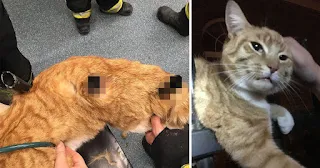<!-- Google tag (gtag.js) -->
<script async src="https://www.googletagmanager.com/gtag/js?id=G-XDGJVZXVQ4"></script> <script> window.dataLayer = window.dataLayer || []; function gtag(){dataLayer.push(arguments);} gtag('js', new Date()); gtag('config', 'G-XDGJVZXVQ4'); </script>Smileband supports 10 charitable organisations that support across the UK and the world, 222 News look in to researched information that is based around news and health related subjects, by entering your e mail and subscribing and verifying it in your e mail box, you are helping support 10 charities that we give money too. Also if a person’s information has been posted or shared and they don’t like it please contact us and we will have it removed, please follow our News.
Monday, 19 March 2018
smileband health topics
smileband general news
Article written by Jessica green,
<!-- Google tag (gtag.js) -->
<script async src="https://www.googletagmanager.com/gtag/js?id=G-XDGJVZXVQ4"></script> <script> window.dataLayer = window.dataLayer || []; function gtag(){dataLayer.push(arguments);} gtag('js', new Date()); gtag('config', 'G-XDGJVZXVQ4'); </script>smileband health topics
<!-- Google tag (gtag.js) -->
<script async src="https://www.googletagmanager.com/gtag/js?id=G-XDGJVZXVQ4"></script> <script> window.dataLayer = window.dataLayer || []; function gtag(){dataLayer.push(arguments);} gtag('js', new Date()); gtag('config', 'G-XDGJVZXVQ4'); </script>smileband health topics
Lower life expectancy
<!-- Google tag (gtag.js) -->
<script async src="https://www.googletagmanager.com/gtag/js?id=G-XDGJVZXVQ4"></script> <script> window.dataLayer = window.dataLayer || []; function gtag(){dataLayer.push(arguments);} gtag('js', new Date()); gtag('config', 'G-XDGJVZXVQ4'); </script>Sunday, 18 March 2018
smileband health topics
Article written by centres for disease control and prevention,
what is Gastroschisis?
Other Problems
Treatments
<!-- Google tag (gtag.js) -->
<script async src="https://www.googletagmanager.com/gtag/js?id=G-XDGJVZXVQ4"></script> <script> window.dataLayer = window.dataLayer || []; function gtag(){dataLayer.push(arguments);} gtag('js', new Date()); gtag('config', 'G-XDGJVZXVQ4'); </script>Thursday, 15 March 2018
smileband health topics
<!-- Google tag (gtag.js) -->
<script async src="https://www.googletagmanager.com/gtag/js?id=G-XDGJVZXVQ4"></script> <script> window.dataLayer = window.dataLayer || []; function gtag(){dataLayer.push(arguments);} gtag('js', new Date()); gtag('config', 'G-XDGJVZXVQ4'); </script>smileband general news
Article was written by Alexandra Robertson,
<!-- Google tag (gtag.js) -->
<script async src="https://www.googletagmanager.com/gtag/js?id=G-XDGJVZXVQ4"></script> <script> window.dataLayer = window.dataLayer || []; function gtag(){dataLayer.push(arguments);} gtag('js', new Date()); gtag('config', 'G-XDGJVZXVQ4'); </script>Smileband News
Dear 222 News viewers, sponsored by Smileband, What Does Trump’s Win Mean for Ukraine Donald Trump’s return to the White House, if it happe...
-
T he White House has discussed using experimental microwave missiles against North Korea to disable Kim jong-un nukes, it has been r...
-
NORMAL MOLES are common small brown spots or growths on the skin that appear in the first few decades of life in almost everyone. Th...
-
Smileband is bring a new health product to society as we care for people health due to getting infections and suffering from bad health issu...






